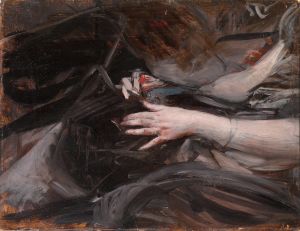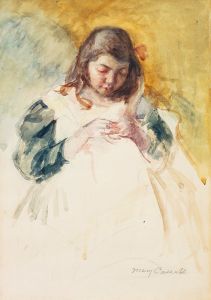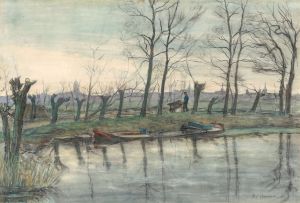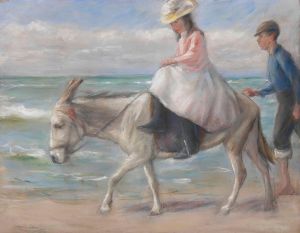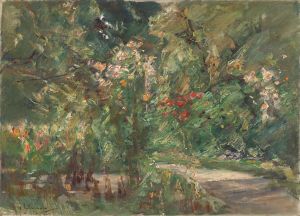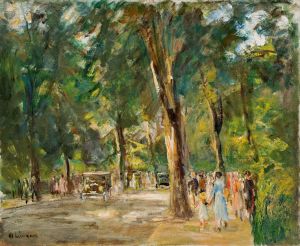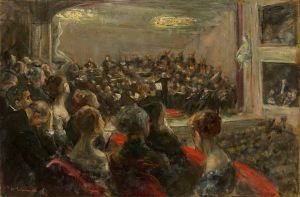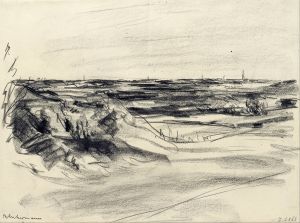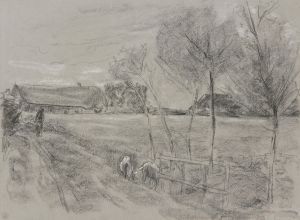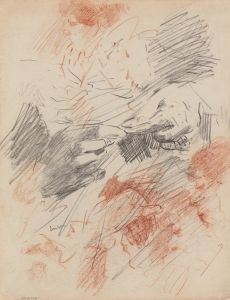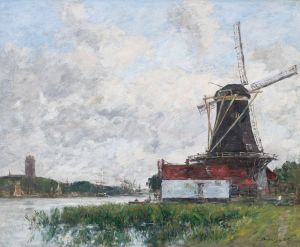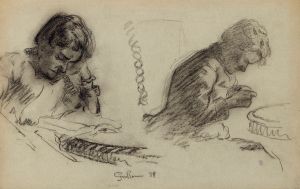
Woman Sewing
A hand-painted replica of Max Liebermann’s masterpiece Woman Sewing, meticulously crafted by professional artists to capture the true essence of the original. Each piece is created with museum-quality canvas and rare mineral pigments, carefully painted by experienced artists with delicate brushstrokes and rich, layered colors to perfectly recreate the texture of the original artwork. Unlike machine-printed reproductions, this hand-painted version brings the painting to life, infused with the artist’s emotions and skill in every stroke. Whether for personal collection or home decoration, it instantly elevates the artistic atmosphere of any space.
"Woman Sewing" is a painting by the German artist Max Liebermann, created in 1887. Liebermann was a prominent figure in the German art scene and a leading proponent of the Realist movement in Germany. He was known for his depictions of everyday life and his ability to capture the essence of his subjects with a keen observational eye.
The painting "Woman Sewing" portrays a woman engaged in the simple, yet intimate act of sewing. This subject matter is characteristic of Liebermann's interest in depicting ordinary people performing everyday tasks, a theme that runs throughout much of his work. The woman in the painting is seated, focused on her sewing, with her head slightly bowed and her hands diligently at work. The setting appears to be a modest, domestic interior, which adds to the sense of intimacy and realism in the scene.
Liebermann's technique in "Woman Sewing" is notable for its loose brushwork and the use of light and shadow to create depth and texture. The artist's palette is relatively muted, with earthy tones that enhance the naturalistic quality of the painting. The light source, likely coming from a window, softly illuminates the woman's figure and the surrounding space, creating a serene and contemplative atmosphere.
Max Liebermann was heavily influenced by the French Realists and Impressionists, and this influence is evident in "Woman Sewing." The painting reflects the Realist emphasis on depicting the truth of everyday life without idealization, as well as the Impressionist interest in capturing the effects of light and atmosphere. Liebermann's ability to blend these influences while maintaining his unique perspective is one of the reasons he is considered a master of his craft.
Throughout his career, Liebermann faced both acclaim and controversy. He was a key figure in the Berlin Secession, an art movement that sought to break away from the traditional academic standards of the time. His work was celebrated for its modern approach and its focus on contemporary subjects. However, Liebermann also faced criticism, particularly from conservative circles that were resistant to the changes he and his contemporaries were advocating in the art world.
"Woman Sewing" is a testament to Liebermann's skill as an artist and his dedication to portraying the dignity and beauty of everyday life. The painting remains an important example of his work and continues to be appreciated for its technical excellence and its empathetic portrayal of its subject. Today, Max Liebermann is remembered as one of the most significant German artists of the late 19th and early 20th centuries, and "Woman Sewing" is a fine representation of his contribution to the art world.





